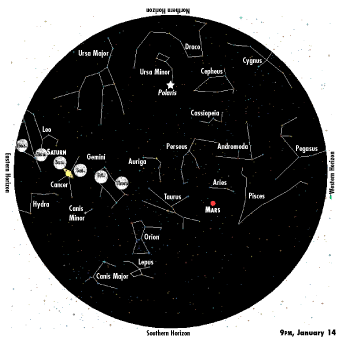
Winter’s Hunt through the Heavens
Orion’s hounds date to earliest days of civilization
The moon glows full Saturday night, rising in the east-northeast with sunset and setting in the west after sunrise. Unseasonably mild weather aside, January’s full moon is the Cold Moon, the Ice Moon, the Wolf Moon. For early hunter-gatherers, this was a long, hard month, with little food other than what could be caught and killed.
The key role of the hunter in winter shines from above every clear night, as Orion marches across the heavens in pursuit of Taurus the bull and Lepus the hare.
Lepus is today a minor constellation, but for many cultures the constellation is akin to the moon. Where we see a man in the moon, ancient Aztecs, Hindus, Chinese, Japanese and Middle Easterners see a hare. Even today, the Japanese word describing the markings on the face of the moon translate to jeweled hare. One myth from Roman times tells of the a scourge of hares destroying all the crops on the island if Sicily, so the people called on Orion to rid them of the pests and placed the constellation beneath the hunter’s feet as a talisman of sorts.
Also trailing Orion are his hounds, Sirius and Procyon of the constellations Canis Major and Canis Minor. Sirius is the brightest star in the heavens, and dates back to the dawn of recorded history, when the Mesopotamians worshiped the Dog Star, whose appearance each year coincides with the annual flooding of the Nile. Today, Sirius is associated with the dog days of summer, as the sun travels its closest to the star July through August. As such, the Dog Star was believed to bring sickness and death.
On the other hand, Procyon, the Little Dog, was thought to bring good luck and fortune. Procyon is actually two stars, Procyon A and Procyon B, which is a white dwarf only twice the diameter of Earth.